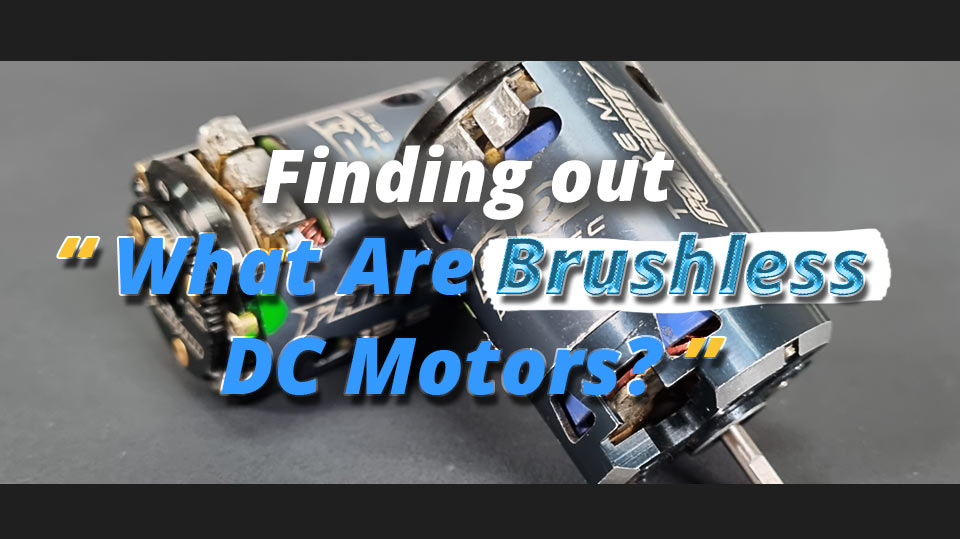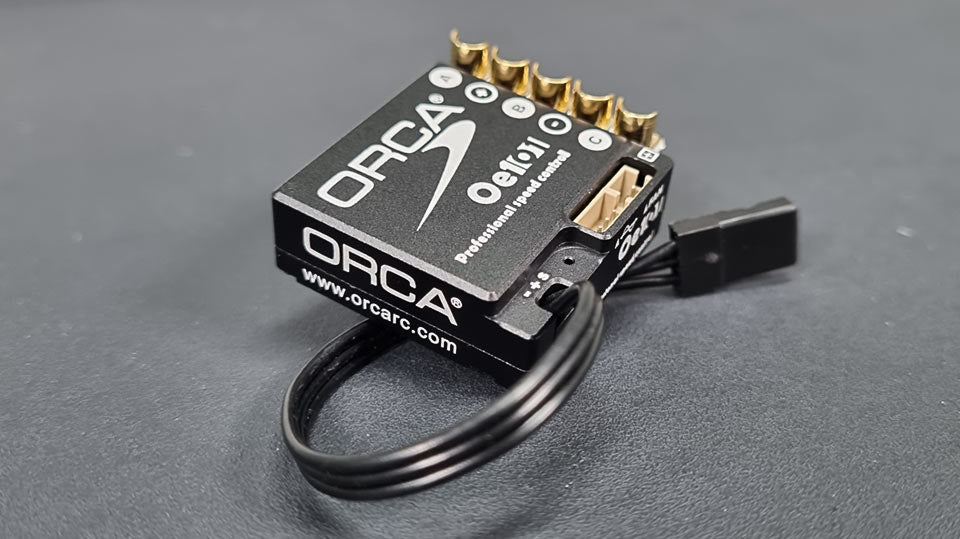WHAT ARE BRUSHLESS DC MOTORS?
...and, are they suitable for RC cars?~
Devices that convert electrical energy into mechanical energy are called motors. While there are various types of motors, Brushless motors (or, BL motors) are widely used and largely preferred in most applications. BL motors are extremely efficient and have a superior level of power, control and reliability, making them the better choice. In this blog we will go through the advantages of using a Brushless motors over Brushed motors, and we’ll tell you why it is the better choice for your RC cars!
WHAT IS A BRUSHLESS MOTOR AND HOW DOES IT WORK?
In Brushed motors, brushes are the point of contact that’s used to transmit electrical current from a static to a rotating part in the motor, these being the endbell to the commutator. Current is passed through the brushes to the commutator into the windings/stators on the rotor, creating a magnetic force that repels the magnets on the motor can. This repeating process makes the rotor spin.
As their name suggests, Brushless motors do not use brushes. This however brings up an obvious question, “How does a brushless motor pass current to the rotor windings?”.
To put it simply, It doesn’t—because the windings/stators are not located on the rotor. Instead, the rotor is a permanent magnet; the windings do not rotate but are instead fixed in place on the motor can. This is the opposite construction to a brushed motor. The windings in the motor are arranged in poles that are individually energised, creating a magnetic field that repels the rotor, therefore making the rotor spin. This repeated process makes the rotor spin without the need for brushes or a commutator, thus reducing friction.

Additionally , there are sensorless and sensored Brushless motors.
WHAT IS A SENSORLESS BRUSHLESS MOTOR?
As the name suggests, sensorless BL motors do not have sensors. In the basic operation of a BL motor, the windings/stators on the motor can be energised to repel the rotor, making it rotate. A problem arises when the rotor is not moving or moving at low speed. The windings are energised in the driving direction but the rotor is in a position where it is not easily repelled. This causes hesitation/stuttering in the movement and leads to a jerky movement on start up or low speed.
This causes a phenomenon that is called cogging and makes driving difficult as the cogging effect reduces acceleration and can destabilise the vehicle during use. If you are predominately using your vehicle at medium to high speed then the cogging is less of a problem.
WHAT IS A SENSORED BRUSHLESS MOTOR?
Brushless motors with sensors are much smoother on acceleration and low speed operation. The sensors also allow for further tuning as the sensors allow communication with the speed controller (ESC). The sensors keep track of the orientation of the rotor and ensure the windings are polarised at the perfect moment to keep smooth and consistent rotation. This ensures that no cogging occurs resulting in super smooth operation. Sensored brushless motors are the preferred choice as smooth operation gives superior drivability.
WHAT ARE THE ADVANTAGES OF A BRUSHLESS MOTOR?
BL motors are lighter, more powerful and are far more efficient than brushed motors as they have no friction created by brushes. The lower friction and reduced moving parts also allow for durability and much longer lifespans in a BL motor. Sensored BL motors take this further by offering levels of control by using feedback mechanisms to deliver precise, desired torque and rotation speed.
WHY UPGRADE TO A BRUSHLESS MOTOR IN YOUR RC CAR?
Most radio control cars come factory fitted with a brushed motor. This is because brushed motors provide adequate performance for their lower cost. Brushed motors are also ideal for the beginner as the lower performance is easier to handle. However, BL motors are superior and are a great upgrade option. To upgrade, you will need to select a BL motor to suit your vehicle. Also, you may need a BL motor speed controller as most factory fitted speed controllers cannot drive BL motors.
Our expert shop staff can help you with your selection.
Your RC car will have greater speed and power, longer running time and a reduced need to change the motor often as BL motors are much more durable.
However, there are some points to take into consideration when upgrading to a BL motor system.
2. It is vital that the correct BL motor is selected to suit your vehicle.
3. The motor gearing in the car may need to be changed to match the extra power of the BL motor.
4. A higher quality battery may be needed to reach the full potential of the BL motor.
The benefits of the BL motor will overshadow the additional cost with significantly higher power, higher speed, longer run duration and lower maintenance.
Brushless motors, particularly sensored, are the perfect companion with RC cars and will bring the maximum amount of performance and enjoyment. The combination of simple construction, low friction resulting in high efficiency, high performance and low maintenance make BL motors the winner in RC car applications. No matter if you need low speed and high torque for crawling, or high revs for high speed, BL motors are the answer.
 is here! Shop now, pay later in 4 easy installments
is here! Shop now, pay later in 4 easy installments






